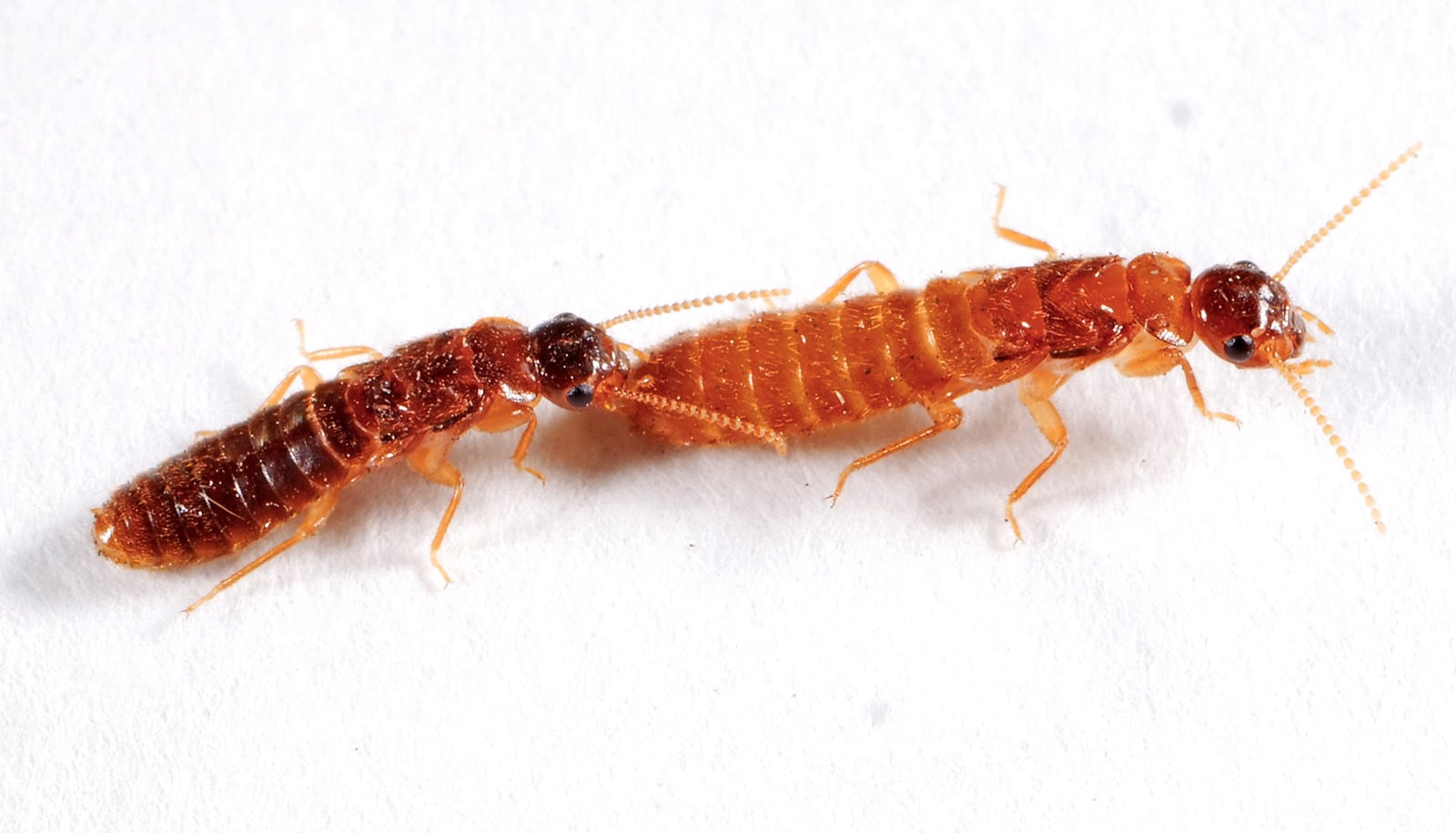Research with two invasive termite species clarifies how animals living in the groups coordinate leader-follow behaviors.
The new paper explores the hidden relationship in termite species behind the behavioral traits of leaders and followers. The scientists used Formosan subterranean termites and Asian subterranean termites.
As social insects, termite queen and king wannabes directly influence their respective movement for mating success and survival. The key is in the female’s pheromones. In termites, during the mating season, winged individuals fly from their colonies to find a mate and create a new colony. The female produces a pheromone that allows a male to find her. In this interaction, the female is the leader, while the male is the follower, as both partners look for a place to start a colony.
The rules of engagement guiding the behavior of leader-follower are often species-specific. Also, they are believed to result from the fine-tuning of the two opposite behavioral traits—leading and following—through natural selection.
Two invasive termite species
South Florida presented a unique opportunity to further test that hypothesis, which is why researchers turned to the termite lab at the University of Florida Institute of Food and Agricultural Sciences Fort Lauderdale Research and Education Center (REC), where Thomas Chouvenc, an assistant professor of urban entomology, specializes in termite biology.
Studies on the biology of termites yield insights into pest management strategies and provide new understanding of complex evolutionary processes.
“In South Florida, we have these two established invasive termite species that cause a lot of damage to structures and trees,” says Chouvenc. “They sometimes engage in interspecific mating activity, with a potential for hybridization, which gave us the ideal opportunity to test this hypothesis.”
“It is challenging to test the hypothesis that the leader-follower behavioral rules are finely co-evolved in an animal species. Such two behavioral traits are inherently linked and difficult to dissect,” says Nobuaki Mizumoto, who led the study as a postdoctoral researcher at Arizona State University and is now at Okinawa Institute of Science and Technology.
Leaders and followers
This new study reveals that both the leader and follower have evolved to expect a set of cues from their partner, and if these expectations are not met, then the coordination falls apart, says Mizumoto.
“Our results have implications on how large groups of animals came to coordinate their efforts through natural selection, or how sexual selection has shaped sex-specific traits to meet a differential expectation between partners,” concludes Mizumoto.
Because the two invasive termite species have evolved separately for about 18 million years, the leader-follow rule in the two species can be slightly different, explains Chouvenc.
“Despite sharing the same pheromone, Formosan subterranean termite females produce much more pheromone than the Asian subterranean termite females,” he says. “We, therefore, hypothesized that the leader-follower rule discrepancies between the two species would reveal a lack of optimization through evolutionary fine-tuning.”
This unique approach allowed the team of researchers to show that males of Formosan subterranean termites cannot properly follow females of the Asian subterranean termite. Meanwhile, males of the Asian subterranean termite are fully capable of following Formosan subterranean termite females.
“This asymmetric result was remarkable because it indicated that male Formosan subterranean termites were not capable or were not motivated to follow females of a species that produce little pheromones. On the other hand, males of Asian subterranean termites were perfectly able to follow females of the Formosan subterranean termites, which produces far more pheromone than these males evolved to track,” adds Chouvenc.
“In a previous collaborative study, we were able to show that males optimize their movement to keep up with females, while the females adapt her movements depending on the feedback from the male following her,” Mizumoto says. The current study highlights that such optimization was the result of evolutionary processes.
While the discovery of the two termite species finding love in Florida remains a concern for their potential impact on our houses, it provides opportunities to test a unique hypothesis, that helps understand how coordination behaviors of animals have evolved, Chouvenc explains.
The paper appears in the Proceedings of the Royal Society B.
Source: University of Florida



